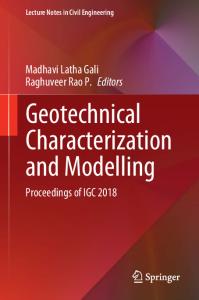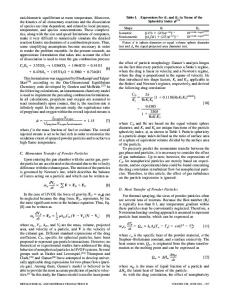Effect of Particle Size on Thermal Conductivity of Nanofluid
- PDF / 570,538 Bytes
- 8 Pages / 593.972 x 792 pts Page_size
- 21 Downloads / 402 Views
THE need for transportation of sensible heat over a finite distance down the thermal gradient using an appropriate fluid is quite common in engineering devices, machines, and plants producing energy, work, or functions. Heat transfer through a fluid mostly occurs by convection that can be enhanced by appropriate flow geometry, boundary conditions, or increased thermal conductivity of the fluid. It is known that the suspension of solid particles in a fluid, as originally proposed by Maxwell,[1] may increase the thermal conductivity of the base fluid, because thermal conductivity of solids is orders of magnitude higher than that of liquids. However, coarse particles, due to their larger size and greater mass than that of finer ones, are prone to sedimentation, develop resistance to fluid flow, and cause erosion to conduits. On the other hand, fluids with suspensions of ultrafine or nanoparticle in very low quantity, called nanofluid (say by Choi[2]), offer exciting possibilities to enhance heat-transfer performance of a given fluid for exceeding the level predicted by conventional models based on the rule of average for fluid with suspension of microsized particles. Larger relative surface area of nanoparticles, compared to that of coarse particles, should significantly enhance heat-transfer capabilities, improve stability of the suspensions, and reduce erosion of channels or conduits. Thus, nanofluids can offer a M. CHOPKAR, Research Scholar, S. SUDARSHAN, Undergraduate Student, and I. MANNA, Professor, Department of Metallurgical & Materials Engineering, and P.K. DAS, Professor, Department of Mechanical Engineering, are with the Indian Institute of Technology, Kharagpur 721302, India. Contact e-mail: imanna@ metal.iitkgp.ernet.in This article is based on a presentation given in the symposium entitled ‘‘Materials Behavior: Far from Equilibrium’’ as part of the Golden Jubilee Celebration of Bhabha Atomic Research Centre, which occurred December 15–16, 2006 in Mumbai, India. Article published online February 6, 2008 METALLURGICAL AND MATERIALS TRANSACTIONS A
significant advantage in the thermal management of both large installations such as heat exchangers, evaporators, or radiators as well as miniature or microelectronics devices. Keblinski et al.[3] have made a useful review of the properties of the nanofluid. The performance of nanofluid critically depends upon the size, quantity (volume percentage), shape, and distribution of dispersoids and their ability to remain suspended and chemically unreacted in the fluid. Despite the exciting opportunities, lack of agreement among experimental results, poor characterization of suspension, and inadequate theoretical understanding of the mechanisms of heat transfer by nanofluid are serious impediments against large-scale commercial exploitation of nanofluids for thermal management in important fields such as electronics, transportation, medicine, and thermal engineering.[4] In the past, experimental studies with metallic and ceramic nanoparticles by several researchers including Choi,[2] Das et al.,[5
Data Loading...










